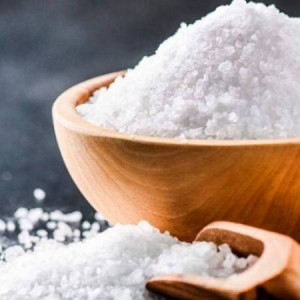Part 1: - Characteristics
Have you ever heard of Gahat Dal or Horse Gram? The large majority will respond with a resounding "Never” or “What is That.” The most potent and protein-dense lentil on the Biosphere is Gahat Dal or Horse gram. This gram is renowned as horse gram since it is fed to racehorses because of its high nutritional content. This is a very nutritive legume, although it is not as well-known as black, red, or green gram.
Horse gram is scientifically known as Macrotyloma Uniflorum, but it is also referred to as kulthi, Gahat, Ulavalu, Kulthi / Hulthi, Hulaga, Kolatha Hurali, and Madras gram in various parts of India. From ancient times, this pulse crop, which is native to the south-east Asian subcontinent and tropical Africa, has been widely cultivated and consumed in India. Gahat is a traditional food in India's mountainous state of Uttarakhand. Recipes like Gahat ki Dal, Gahat Dal ka Paratha, Gahat Dal ka Soup, Dubke and Gahat dal ke pakoda are some of the popular Uttarakhandi dishes. This significant and underutilized tropical crop is now grown largely in dry agricultural settings and has a low profile, although it is on the rise. The US National Academy of Sciences has chosen this bean as a future food source due to its excellent nutritional profile, drought resistance, and general hardiness.
Horse gram is a climbing plant with white blooms and leaves with small leaflets in triplets. When the short and thin stem matures and develops, it produces flattened little red, brown, or black seeds in the appearance of a bent beak.
Because it is tightly filled with critical nutrients, this little natural seed offers some fantastic benefits for general health. Horse gram is high in critical trace elements including iron, molybdenum, and calcium, in addition to being naturally high in carbohydrate and protein. These supply adequate energy, muscular strength, red blood cell synthesis control, and bone fortification. It also contains sufficient levels of B vitamins, which ensure that cells' metabolic functions are appropriate.
As a result, it is no wonder that horse gram is now extensively consumed across the world, in the form of sprouted or cooked seeds, as a health drink prepared from powdered powder, and in traditional Indian cuisines such as dals, soups, and salads.
Ayurveda highly recommends various formulations in which horse gram is a vital ingredient because of its essential medicinal benefit, such as Kulathadhi kashaayam, which has been used widely in the treatment of health problems. Horse gram, a fiery bean, can reduce kabha and vatha dosha while increasing rakta pitta kopaka dosha. Horse gram is also used to cure jaundice, rheumatism, conjunctivitis, and piles, according to Ayurvedic medicine.
Horse gram is high in polyphenols, flavonoids, and powerful antioxidants, which help to keep your body robust, bright, and youthful. Researchers at the Indian Institute of Chemical Technology discovered that raw, unprocessed horse gram seeds can reduce blood sugar increases after meals by lowering stomach emptying time and decreasing insulin resistance, making it a diabetic-friendly diet. Horse gram, according to traditional texts, has the ability to treat any health condition you can think of, including asthma, bronchitis, leukoderma, urine discharge, kidney stones, and heart problems.
The horse grams paste is used to relieve localized edema. To remove toxins from the system, the seeds activate sweat glands and open the body's pores. Horse gram infusion has strong astringent and diuretic effects and is used to treat kidney stones, urinary bladder problems, and micturition difficulties. It also aids in the initiation of the menstrual cycle and the treatment of oligomenorrhea (scanty bleeding).
I'll attempt to discuss the nutritional qualities of horse gram in the up coming article, which makes this lentil an ultimate superfood. Once you've learned about all the therapeutic properties of this nutrient-dense legume, you'll be motivated to include it in your diet.















Follow Chef Sunil